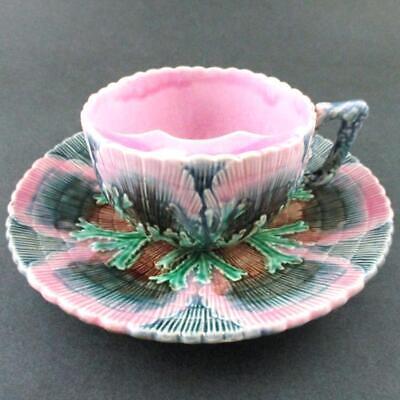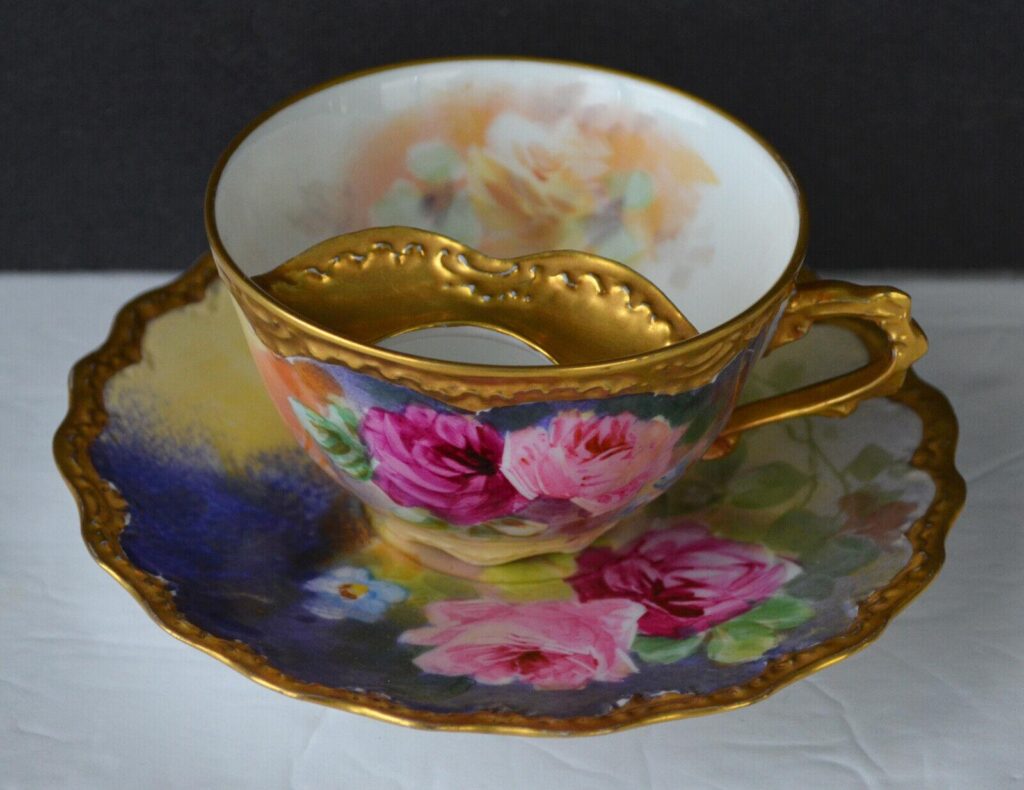#Victorian #Mustache #Cups #Fun #Functional #Collectibles #WorthPoint

When extravagant mustaches became fashionable during the Victorian era, tea drinkers faced a predicament: the hot beverage melted the wax that kept their well-groomed ’staches in place and made them droop.
But an innovative English potter came up with a solution: mustache cups—specially designed teacups that are equal parts functional and fanciful.
These whimsical cups are collected today by those who love Victorian curiosities or specialize in tableware. Mustaches not required.
MUSTACHE MANIA
Mustaches were all the rage throughout the 19th century as a symbol of masculinity, respectability, and status. Though the reigning monarch often influenced facial-hair trends, mustaches became particularly popular among civilians after soldiers returning from the Crimean War sported them. The British Army also made mustaches mandatory for soldiers in 1860.
Cultivating elaborate facial hair became an art form for Victorian gentlemen, who spent a lot of time washing, brushing, combing, curling, and dyeing their mustaches and beards.
Men grew mustaches in all sizes and shapes and needed to use a large amount of wax to hold their facial hair in place and the corners of their ’staches upright. The wax led to some disasters when attending afternoon teas and social functions: Mustache wax would melt from the steam of hot beverages and drip down beards, which were often dyed, and then dribble into cups, along with by-then drooping mustaches. Coffee and tea also often stained facial hair.

A CLEVER SOLUTION
Taking note of all the grooming efforts being sabotaged by a simple cup of tea, English potter Harvey Adams invented the practical yet whimsical mustache cup around 1860 by adding a mustache guard to a teacup. This guard, a mustache-shaped ledge made of china or silver, was attached across the bottom of the cup’s rim and had a small opening in the middle. This design allowed gentlemen to sip tea, coffee, or hot chocolate through the opening while keeping their facial hair clean, dry, and droop-free.
Adams’ mustache cups were an instant hit, and soon afterward, famous pottery manufacturers across Europe, including Belleek, Limoges, and Royal Crown Derby, were making and selling their own versions in great quantities.
Plenty of American men also sported facial hair, and it didn’t take long for mustache cups to make their way to the United States and were sold at Marshall Field’s, Sears, Woolworth’s, and other stores.
Although many were made in the U.S., it’s challenging for collectors to find a true Victorian mustache cup bearing an American pottery mark. English-made ceramics were popular at the time, so these early cups were marked with names that made buyers believe they were manufactured in England.
On a side note, Americans invented a related item: the mustache spoon, which protected facial hair when eating soup. New York engineer Solon Farrer submitted one of the first patents for one in 1868, and Ellen B. A. Mitcheson of Philadelphia submitted another patent in 1873 that improved the design.
A MYRIAD OF MUSTACHE CUPS
Mustache cups were produced in various shapes and sizes, ranging from diminutive demitasse cups to “farmer’s” cups that could hold up to a quart, and made from earthenware, porcelain, silver plate, stoneware, and tin.
Potters decorated cups with various designs, including animals and birds, flowers, geometrics, hunting scenes, and landscapes. Though meant for men, most antique mustache cups that collectors find will have a more feminine decoration because they were aimed at female consumers, who at the time bought all the tableware for their households. Women also bought them as gifts for their husbands, fathers, and brothers. His-and-hers sets were popular wedding gifts.
Many examples, especially those made in Germany, had luster grounds and were a favorite of Victorians. Rare portrait mustache cups were also highly desirable.
With the start of World War I in 1914, military men went back to clean-shaven faces, primarily because they provided a tighter seal for gas masks worn on the frontline.
From around 1920 to 1930, mustaches were no longer in vogue with most men, and the production of mustache cups dwindled. But they did cause at least one last stir in the U.S. in the 1930s with the story of the famous (yet fake) Ringling Brothers’ mustache cups that appeared in newspapers and magazines.
COLLECTING MUSTACHE CUPS
Facial hair became popular again during the pandemic, and mustaches are back in a big way. Mustache-growing competitions also take place worldwide. This has created a new demand for the 19th-century accessory and specialty artisans are producing modern mustache cups. But collectors, of course, covet antique and vintage mustache cups, and a growing number of enthusiasts are on the hunt for them.
Mustache cups range from around $5 to hundreds of dollars for sets and single examples made by noted European pottery manufacturers like Belleek, Dresden, Imari, Limoges, Meissen, Nippon, R.S. Prussia, and Royal Crown Derby. Most mustache cups will have matching saucers, but saucers aren’t as prized as the cups themselves and don’t necessarily add more value.
Among the most collectible mustache cups are those with gold trim or a luster glaze, such as copper, and applied-raised motifs of flowers, fruit, and other decorations. Also valuable are left-handed mustache cups, as they are extremely rare. However, collectors and resellers need to be aware that many left-handed cups are reproductions, so don’t get duped.
For more information on mustache cups, check out this WorthPoint Dictionary page.
Adina K. Francis has been a writer and editor in the antiques and collectibles field for more than 20 years. She has a bit of an obsession with the Victorians and thinks that dogs are one of life’s greatest gifts.
WorthPoint—Discover. Value. Preserve.




